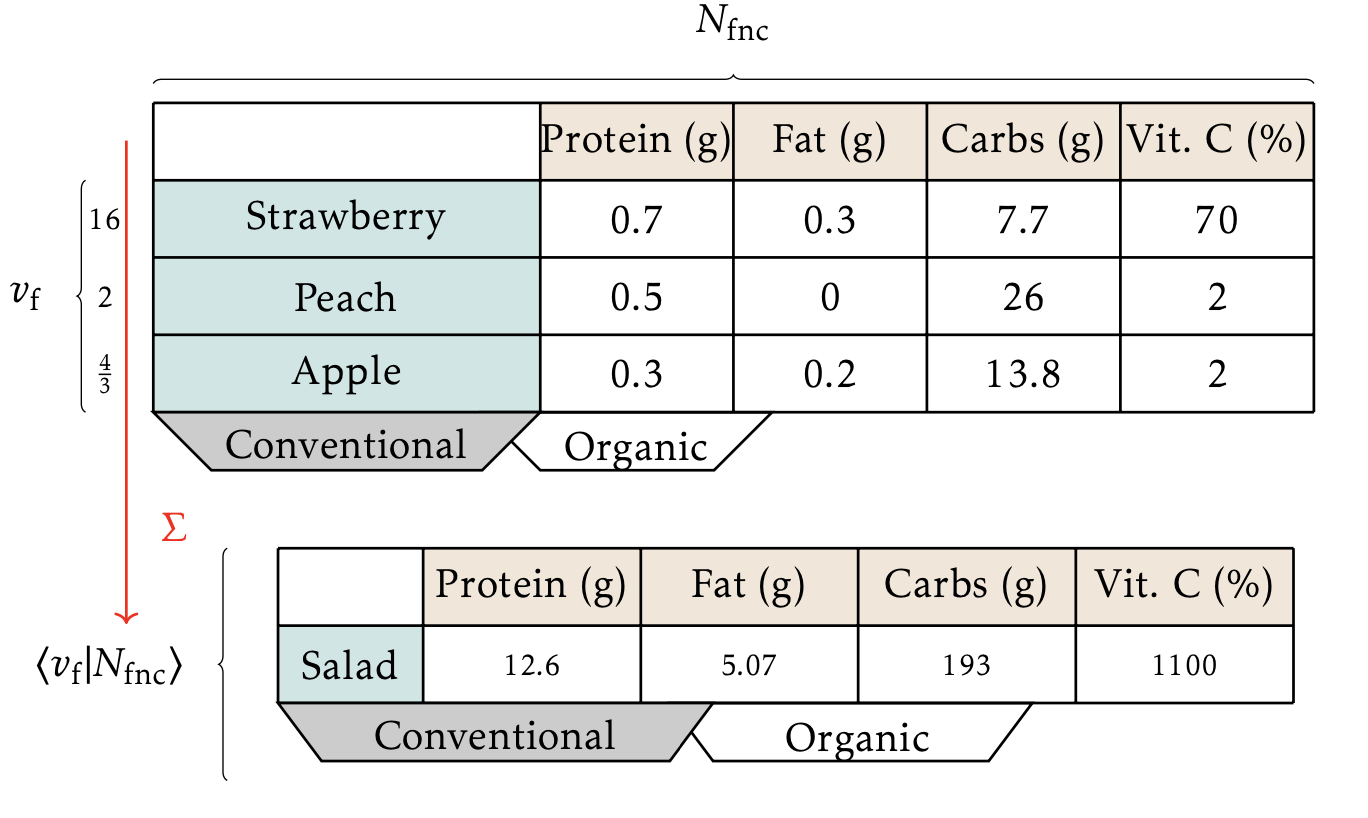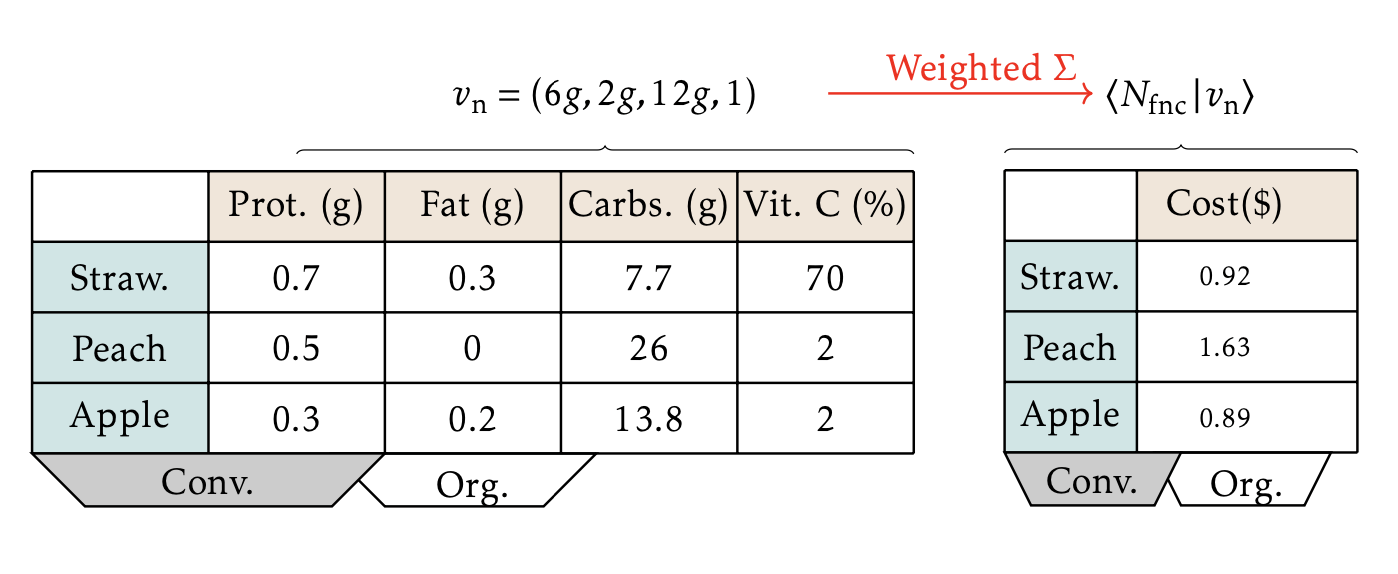Please distribute
contraction & Inflation
CC-By 4.0 James B. Wilson, 2024
Contractions & Entropy
-
Data table \(T\)
-
User recipe of rows \(v\)
-
Contraction \(\langle u\mid T\rangle\) is newly generated data.
Contractions need recipes

-
Data table \(T\)
-
User recipe for columns \(v\)
-
Contraction \(\langle T\mid v\rangle\) is newly generated data.
Multiple Contractions allowed


Entropy of contractions
- The order of contractions is immaterial to the result.
- Entropic ("disorder") means operators that applied in any order are the same.
- Commutative? Associative? No, these are different operators, not one operator with rewriting rules.
Entropy
Given products \((u_1,\ldots,u_n)\) and \(\begin{bmatrix} v_1\\ \vdots\\ v_m\end{bmatrix}\)
Entropy
=
Main Example




Inflation & Distribution
-
Recepies \(u,v,w\)
-
Build a product \(u\otimes v\otimes w\) whose partial evaluations are entropic.
Inflation produces tables


Product Notations
Functional notation \[u:\text{axes}\to \text{space}\] so partition axes to partition input.
tensor spaces
-
Data table \(T\)
-
First recipe of rows \(u\)
-
Second recipe \(\acute{u}\)
-
Contract \[\langle u+\acute{u}\mid T\rangle=\langle u\mid T\rangle+\langle \acute{u}\mid T\rangle.\]
Multiple recipes


measurement distributes
Even in limits
measurement Is contextual

- River's length is in miles/km
- River's depth is in feet/meters.
- Volume in gallons/liter
- \[\text{vol}(t\mid \text{length}, \text{depth}, \text{width})\]
- USA \(t=39,500 \text{gal}/\text{mile}\times \text{ft}^2\)
- EU \(t=1 \text{l}/1000 \text{km}^2\times \text{m}\)

Convention is not the point. In binary both conversions are bizzare choices.

Definition.
A tensor space is a distinguished term of a distributive product.
A tensor is an term/element of a tensor space.
Definition.
A cotensor space is the type of outputs of a distributive product.
A cotensor is an term/element of a cotensor space.
| Interpretation | Tensors | Valence |
|---|---|---|
| Area/Volume/... | Measure | 2,3,... |
| Markov process | Distribution | 2 |
| Cost functions | costs | 1 |
| Distributed computing | Thread pool | any |
Potential tensor spaces
| Interpretation | Tensors | Valence |
|---|---|---|
| Logic/circuits | gates (and/or...) | 2,3,... |
| Foundations | Distribution | 2 |
| hom, tensor product,... | Categories | 2,3... |
Potential tensor spaces
The implication
Data Table
Multiplication Table


The point:
Data Table
Multiplication Table





The point
Algebra has 1200 year head start on organizing data.
The requirement
Medial Law: a special case of entropy
-
Current distributes proportional to resistance
-
\(I=R_1 I_1+R_2 I_2\)
-
New addition \[I_1\boxplus I_2=R_1 I_1 +R_2 I_2\] is medial.
Ohms law

Eckmann-Hilton Argument
A medial addition with a 0 is a both commutative and associative.
Commonoid = "Commutative Monoid"
To play nice with products add axiom:
\[\forall a \qquad \langle 0_a,u_{\bar{a}}\rangle=0\]
Grothendieck.
Every commoind has associated to it an abelian group to which it is maximally embedded.
Fact. If negatives exist then they already play nice \[\forall a \qquad \langle -u_a,u_{\bar{a}}\rangle=-\langle u_a,u_{\bar{a}}\rangle\]
Murdoch-Toyoda.
Every medial quasigroup is an affine twist of an abelian group.
\[x\boxplus y=Mx+Ny+b\]
Quasi-group: \(a+x=b\) and \(x+a=b\) has unique solutions.
Tensor take products Cotensors make products